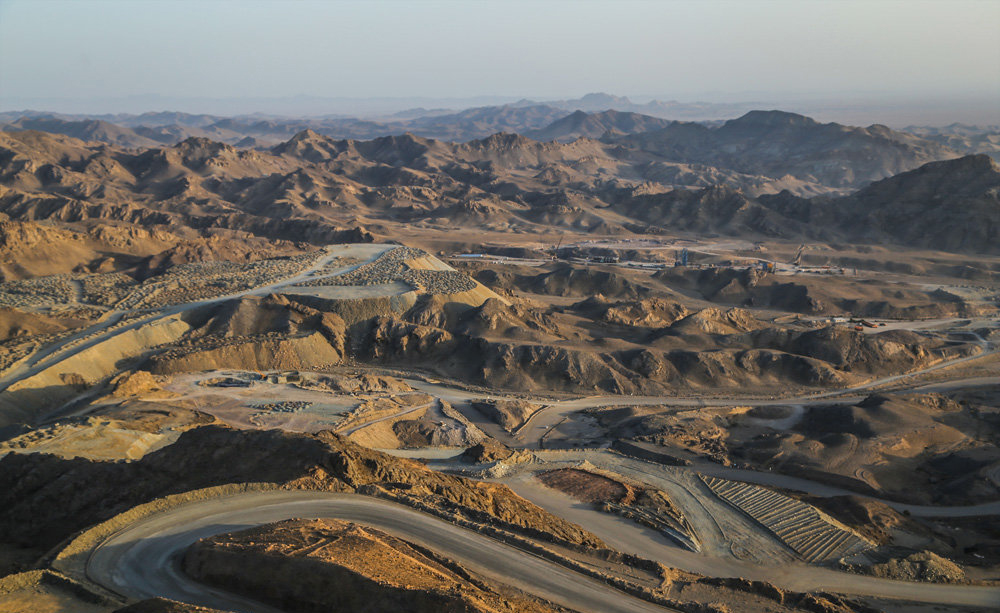The long-term growth of Iran’s largest iron ore mineral zone located in the northwestern Khorasan Razavi Province and the realization of the ambitious expansion goals set for the sector require further development of Sangan region’s water and railroad infrastructures, says Managing Director of Sangan Iron Ore Complex Ali Seddiqifar.
“SIOC’s development projects, when operational, will require at least 25 million cubic meters of water to function. Neither the region nor the province is capable of meeting this demand,” the official was quoted by Iranian Mines and Mining Industries Development and Renovation Organization’s public relations office as saying.
According to Seddiqifar, the company has taken measures to counter this deficiency. These measures include developing new technologies to reduce the plants’ water consumption, and purchasing industrial wastewater from nearby cities to be used by the industrial complex after treatment. The initiatives will only be short-term remedies, however, and the final solution requires the government’s support.
Sangan is also in need of expanding its railroad transportation capacity from the current 8 million tons–only 5 million tons of which are being utilized–to 31 million tons by the time SIOC’s expansion plans are completed.
Furthermore, the plants need to be connected to nearby cities such as Torbat-e Jam and also the country’s southern provinces.
“Companies that invest in Sangan’s railroad expansion will witness returns on their capital in less than two years,” the official promised.
Known as Iran’s Mineral Heaven, Sangan Mineral Zone is home to over 1.2 billion tons of estimated iron ore reserves and is expected to grow even more through explorations.
Six mineral processing plants are under construction in the region with an annual production capacity of 17.5 and 15 million tons of iron ore concentrate and pellets respectively. Two of the plants with a total of 10 million-ton capacity are scheduled to be completed by the end of the current fiscal year (March 20, 2017), said the official, adding that the rest will become operational within the next three years.
Based on the goals set in the 20-Year National Vision Plan (2005-25), the domestic steel industry is to boost its crude production capacity from the current 31 million tons to 55 million tons per year by the end of 2025.
To meet the ambitious target, iron ore pellet making capacity needs to rise from the current annual rate of 28 million tons to 48 million tons by 2018, 82 million by 2021 and 85 million tons by 2025.
According to Seddiqifar, SIOC is going to supply 20% of the feedstock required for the envisioned 55 million-ton steel output.
Iron ore pellet is an enriched form of the metal shaped into balls and used as raw material for blast furnaces, which is used in integrated steelmaking, during which coke, iron ore and pellets react together under a hot air flow to form liquid hot metal, also called pig iron.


